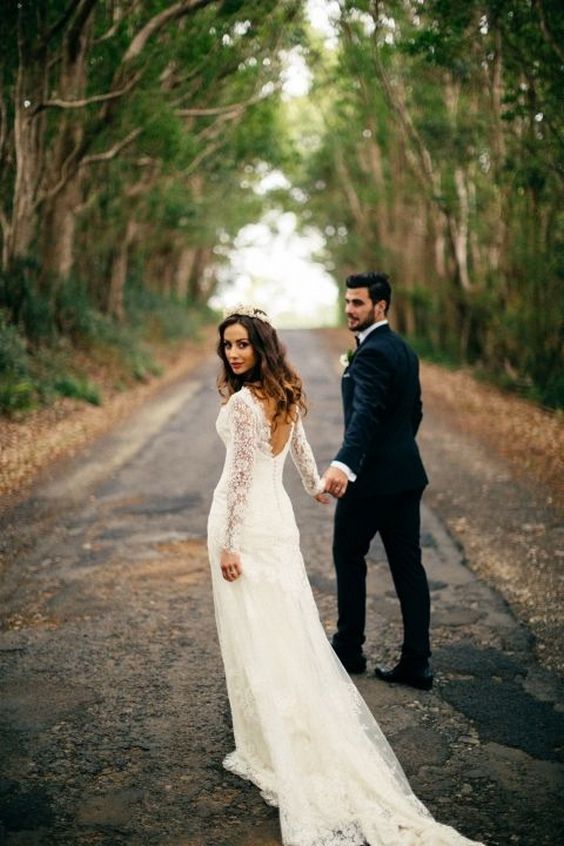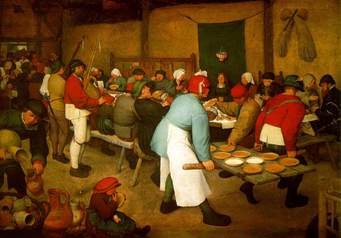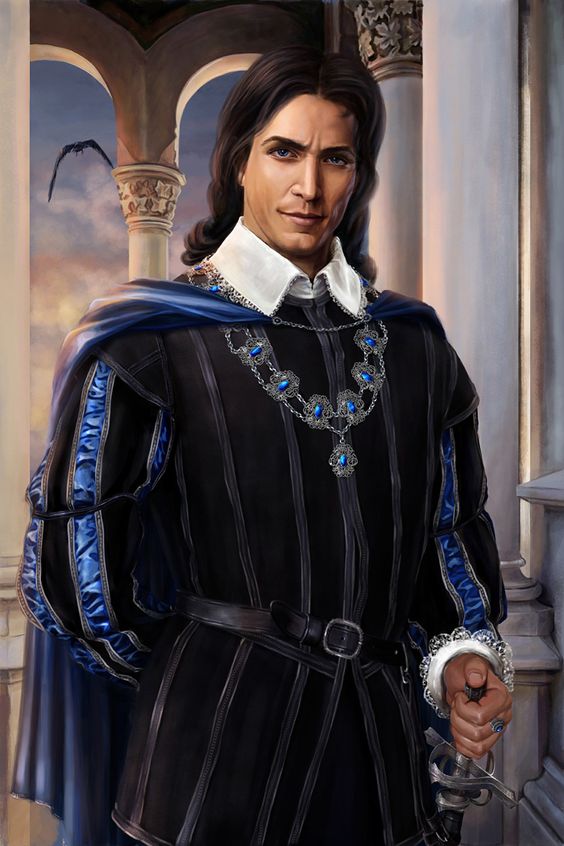
Marriage and Royal marriages are at present headline news, the opulence and ceremonies , the clothing, the venues are all are exposed on social media.
When and where and how did the marriage ceremonies originate, and where does the wedding feast as we know it fit in.
In the Middle ages it was easy for people in Western Europe to get married.
Couples did not need permission of families, nor did a priest officiate at the marriage.The saying goes that Trying for tying the knot was easy, but proof of the marriage was a difficult and a different matter!
The English Church tried to create and enforce marriage laws, and it took some time before this happened.
Couples did not have to marry in a Church, and archival records show that people got married on the road, at the local pub, at friend's houses, or own homes, and some recorded even in bed!
All that was required was that 2 people to consent to marriage, and this constituted a binding marriage.
In some places in England it became popular to get married near Churches, believing it will add a Spiritual element to the marriage. Very often it was at the Church doors, resulting in the adding of ornate porches at Church buildings. At this time no priest were involved yet.!
[oranate Church porch England.jpg].
( ).
).
Christians were allowed to marry from puberty upward, 12 for women and 14 for men!NO parental consent was required. During the 18th Century the laws were changed in England but the old rule still applied in Scotland, making towns like Gretna Green a destination for eloping couples.The Medieval Church upheld freely given consent for marriage, the families had a great influence over the choice an approval of marriage partners. Social standing a major factor in choices.
Pre nuptial agreements became law for widows who wanted to remarry, in order to protect the children.
The permission of their Lord or King was required, requested by the parents of the couple .
Marriage of different classes were frowned upon.
Various words or phrases and actions were used during Medieval times. Consent to Mary would be verbally given"words of consent"and no further specific phrase or formula required.
A present consent did not have to be consummated in order to count, at a later stage when consummated still stand as legal. A "wed"could be any gift by those involved, and would mean consent to marry, it often was a ring.A "wedding"was where the man gives a woman a ring and she accepted the marriage.
Ad we can well believe a lot of misunderstanding happened, as it was difficult to determine if the couple was married,, often the people did not even agree among themselves.In 1212 -to 1217 the Enlish Church issued a statement of warning "Than no man shouold place a ring of reeds or any other material, vile or precious on a young woman"s hand in jest, or with with bad intentions"
At this time the vast majority of cases in court were to confirm, enforce or prove marriages.
The marriage mix ups bothered the clergy and by the 12 Century declared that marriage is a holy sacrament. The union of man and woman in marriage represented the Union of Christ and the Church, and is a very serious matter. As God was the witness, no marriage witnesses were needed, but recommended to avoid uncertainty later.
Church services became available but were not mandatory,and only a small minority had Church services.
Divorce did not exist, and the only way to end a marriage was to prove that it never existed legally!
In order to marry one had to be single vow free and only Christians could marry one another.
A number of impediments could also prevent marriage.

Related couples could not marry. Before 1215 anyone qith a 5th great grand parent in common were to closely related to marry! After 1215, it was reduced to having a great grandmother in common, and no longer deemed to be incestuous!
Godparents and godchildren were not allowed to married as they were spiritually related, and c;lose in laws were also not allowed to be married.
In 1215, the reading of bans were introduced to flush out any impediment, and the term "speak now or forever hold your peace"was introduced during the Reformation.
Joan of Kent (who later married Edward the Black Prince) mother of Richard 11 was married in her early teens with a full Church service and lots of publicity. But the marriage was overturned after 8 years by a papal court and she was returned to a knight who she secretly married when she was twelve!
Romantic love was frowned upon during theTudor period.
A good marriage was one that brought mutual prosperity. advanced social status or to strengthen political alliances..


Five hundred years ago royal and noble parents arranged their daughter's marriages to men of appropriate rank, selected for political advantage, and status was everything. Many an unwilling bride were matched with elderly rich or titled gentleman. A marriage with someone with dubious bloodline, meant to be cast off from friends and family
In history we see many arranged marriages among the Royalty in Europe. Marrying outside their standing they risked reputation, and possessions for the freedom of Love.
It is not quite clear to me when marriage became a a ceremonial affair with glamorous services, great feasts, and elegant clothes as we see today, but I believe it to be in the seventeenth century